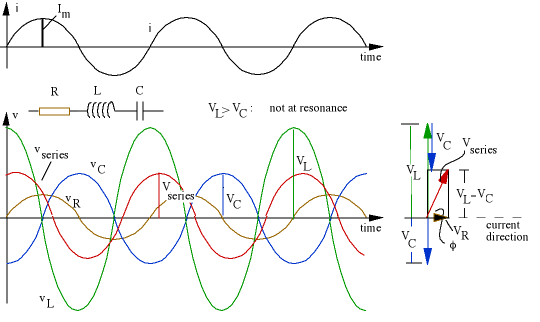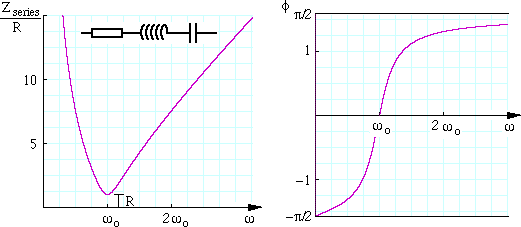RLC Series combinations
Now let's put a resistor, capacitor and inductor in series. At any given time, the voltage across the three components in series, vseries(t), is the sum of these:- vseries(t) = vR(t) + vL(t) + vC(t),
Once again, the time-dependent voltages v(t) add up at any time, but the RMS voltages V do not simply add up. Once again they can be added by phasors representing the three sinusoidal voltages. Again, let's 'freeze' it in time for the purposes of the addition, which we do in the graphic below. Once more, be careful to distinguish v and V.

- V2series = V2R + (VL - VC)2

where Zseries is the series impedance: the ratio of the voltage to current in an RLC series ciruit. Note that, once again, reactances and resistances add according to Pythagoras' law:
- Zseries2 = R2 + Xtotal2
= R2 + (XL- XC)2.
Now let's look at the relative phase. The angle by which the voltage leads the current is
- φ = tan-1 ((VL - VC)/VR).

The dependence of Zseries and φ on the angular frequency ω is shown in the next figure. The angular frequency ω is given in terms of a particular value ωo, the resonant frequency (ωo2 = 1/LC), which we meet below.



The next graph shows us the special case where the frequency is such that VL = VC.






ไม่มีความคิดเห็น:
แสดงความคิดเห็น